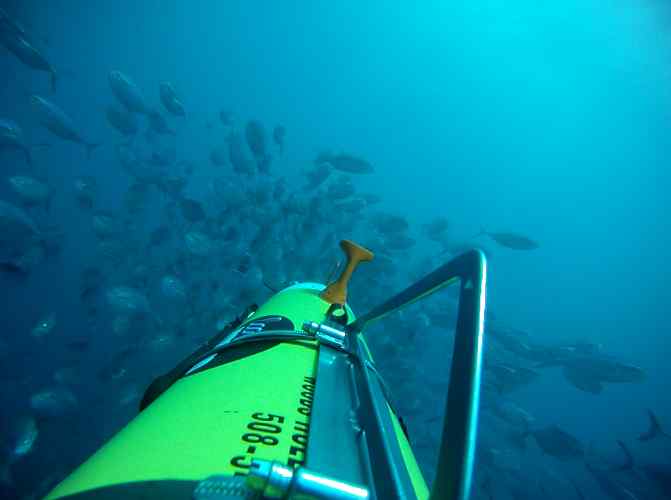Please note: You are viewing
the unstyled version of this website. Either your browser does not support CSS
(cascading style sheets) or it has been disabled.
Skip
navigation.
|
|
This site is no longer supported Low-frequency (< 1kHz) sound waves are used to probe beneath the sea floor, to measure ocean temperature and currents, and to probe meso-scale physical features, such as internal waves, fronts and eddies. Mid-frequency (1-10 kHz) sound waves are used for acoustic communications, as well as to perform fish-resonance classification. High-frequency sound waves are used to measure temperature microstructure, small scale currents, wind-blown surface roughness, and the distribution and abundance of marine organisms such as zooplankton, squid, and fish. Many of the tools and techniques for ocean acoustics originated in OASL where they are still the focus of active research. Underwater acousticians in OASL are involved in a wide spectrum of research areas including underwater signal processing and communication, acoustic imaging, sound scattering from the Arctic ice, bubbles, sediments, and from biologics. OASL researchers are also involved in marine mammal communication and localization studies. History of Acoustics Research at WHOI WHOI played an important role during WWII due to the acoustics research being done here. See our OASL/WHOI history archive for more information about the role acoustics research played during WWII and at WHOI, we have a number of fascinating manuscripts obtained from the WHOI archives and the History of Acoustics at WHOI presented at the Acoustical Society of America in May 2015 and written into a POMA manuscript in 2016. Last updated: July 17, 2017 | |||||||
|
Copyright ©2007 Woods Hole Oceanographic Institution, All Rights Reserved,
Privacy Policy.
|

